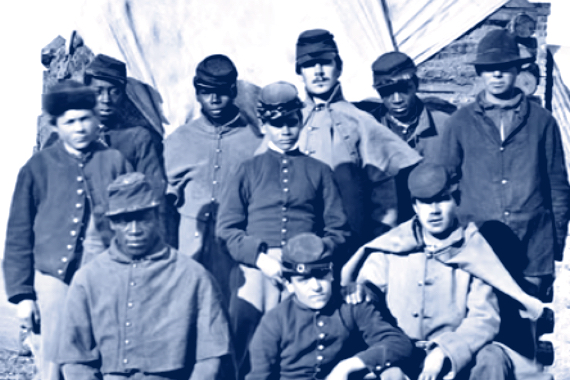Conflict has long been an inspiration for writers, and the U.S. Civil War inspired many.
The University of Virginia’s John L. Nau Center for Civil War History will explore some these writings in its inaugural conference, “War as Muse: Revisiting Iconic Texts of the Civil War Era,” to be held Friday in the auditorium of the Albert and Shirley Small Special Collections Library, beginning at 8:30 a.m.
The conference will feature UVA scholars and other Civil War experts examining such iconic texts as Jefferson and Varina Davis’ postwar memoirs, Edward Port Alexander’s accounts of Confederate military actions, Charlotte Forten’s Civil War diary entries and Joseph T. Wilson’s accounts of African-American patriotism during the war.

Caption: Gary Gallagher, the director of the John L. Nau Center for Civil War History, will host the center’s first conference on Friday.
Q. What is the focus of this conference and why is this important? How did you come up with this topic for your first conference at the center?
A. This conference focuses on some of the most important texts written by people who experienced the American Civil War. The idea grew out of conversations among a group scholars affiliated with the new John L. Nau III Center for Civil War History at UVA and uses as a model the recent work of Stephen Cushman, the Robert C. Taylor Professor in the Department of English. [In 2014, Cushman published “Belligerent Muse: Five Northern Writers and How They Shaped Our Understanding of the Civil War.”] The conference will interweave military, social and literary history, using notable writers and their works to explore how authors dealt with the profound ways in which the Civil War changed the lives of its combatants and chroniclers and how these accounts shaped subsequent understanding of the most turbulent period in American history. The conference will underscore the Nau Center’s goal of engaging with the era of the Civil War in a way that exploits the strengths of scholars in different disciplines.
Q. What makes an “iconic text” of the Civil War era?
A. We decided to include examples of writings that influenced many generations of readers and scholars. The word “iconic” has several meanings and connotations. In religious contexts, an icon is an image to which people attribute special value or power. In secular contexts, the word has come to mean something widely recognized or well established, as in an iconic brand name, especially something characterized by particular excellence or distinction. Lincoln’s Gettysburg Address would be an example of an iconic work, one with lasting powers that for many readers blur the boundaries between religious and secular.
Q. How heavily documented is the Civil War, and does that make scholarship easier or more difficult? As one of the first photographed wars, do the images compete with or enhance the words?
A. Estimates of the number of books devoted to some aspect of the Civil War range from 60,000 to more than 75,000. Letters, diaries, memoirs and other primary accounts constitute a significant percentage of the whole body of evidence, and the number of published accounts is staggering.
This rich lode of testimony, although sometimes intimidating because of its sheer scale, affords historians ample opportunity to pursue almost endless lines of inquiry. The problem often is not finding enough material, but deciding when to stop looking at additional evidence.
The fact that the Civil War was the first to be extensively photographed affords historians the option of drawing on images to deepen, or supplement in other ways, their research in literary sources.
Q. Are new documents still being discovered? How much of current scholarship is re-interpreting known documents?
A. New materials come to light on a regular basis. Almost all of the more than 3 million soldiers on both sides were literate, as were civilians in the United States and the Confederacy, away from home for the first time, and involved in what they considered important events – all of which helped produce a massive volume of letters. Families often kept and treasured those letters – or diaries – and many come to light every year, including some by figures who played important roles in the conflict.
Other “new” texts include more accurate editions of older materials that were poorly edited in their original form.
Finally, historians who bring fresh questions to the table often plumb iconic texts with an eye toward presenting different information or interpretations.
Media Contact
Article Information
March 29, 2016
/content/new-uva-center-probe-iconic-civil-war-texts

